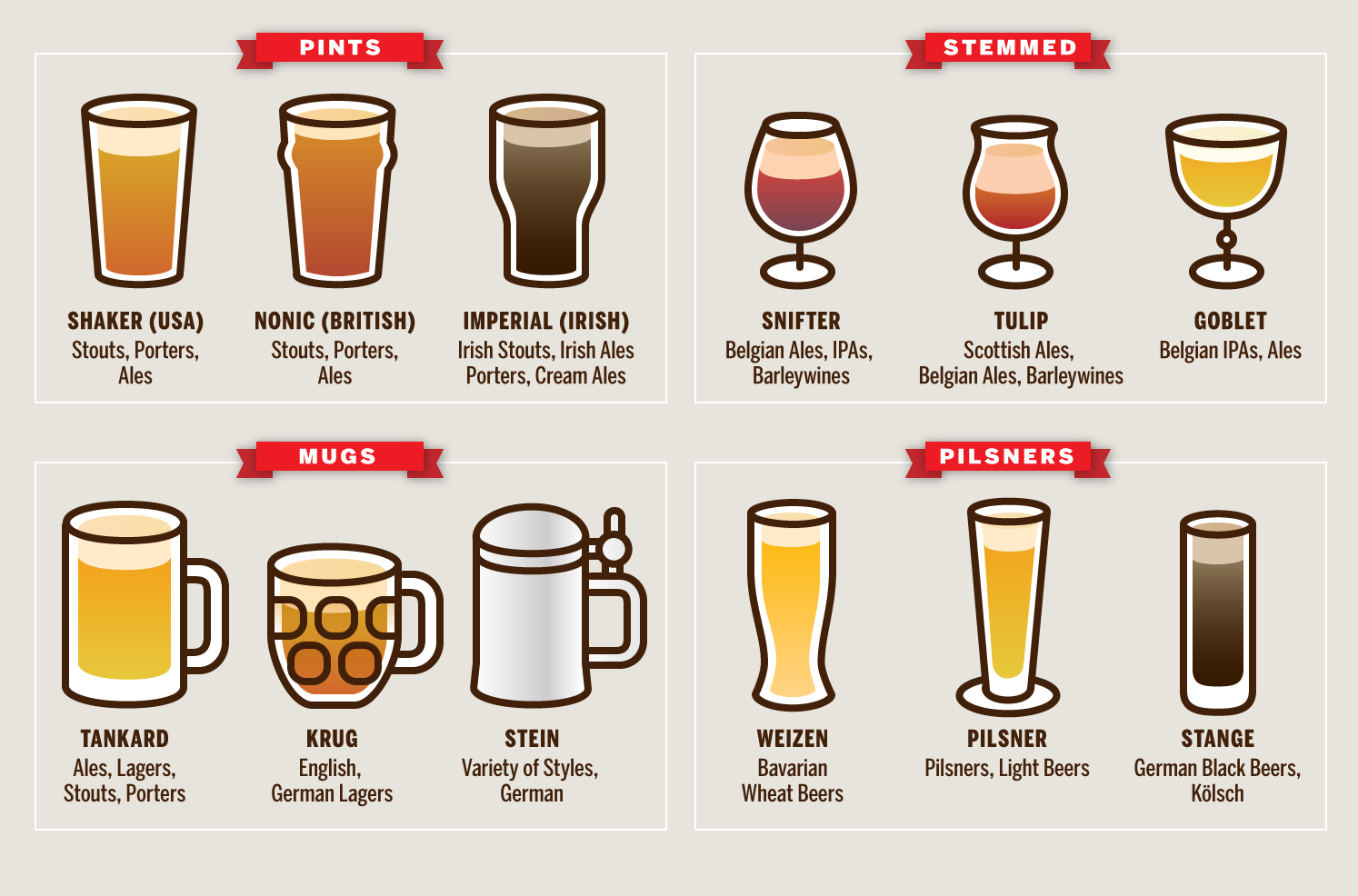The Ingredients: Water, malt, hops, and yeast—that’s all you need. Additional ingredients can be added to the delight and confusion of drinkers. Some beers get a little too creative with their ingredients. I once tried a jalapeño beer. It was terrible. I once had beer that tasted exactly like pumpkin pie. Amazing.
How It’s Made: When the malt and hops are cooked in the water, it’s called wort, which is essentially sugar water. Then yeast is added. The yeast eats the sugar and produces alcohol, a process known as fermentation, which makes it beer. These elements are adjusted to create the different types of beer.
Why Is Beer So Good: Beer pairs well with all the food you love. Flavors vary, but it can be a little sweet or a little sour with a nice kick of carbonation and alcohol. Beer has nutrients, vitamins, and antioxidants. Beer is adaptable to almost any occasion. Beer has heft and personality.
Light/Dark: The hue, or shade, is derived from the grains (and how much they are roasted) and other ingredients. The color will often help you anticipate how a beer might taste. Color doesn’t indicate alcohol level. Case in point, Antigoon’s Revenge from Lakewood Brewing Company has a golden hue and yet features a staggering 12.4 percent ABV.
Hoppy/Malty: Beer flavors could be charted on a triangle. At the vertices, there’s malt, hops, and yeast. Malted grains provide the sugars that are fermented. A “malty beer” is sweeter, but don’t say “sweet.” Say “malty” or “malt-forward.” Hops are the spice of beer. They balance out the malt with a touch of bitterness. Pilsners and IPAs are more hoppy or hop-forward. Beers in the middle are called “balanced.”
Session Beer: You can describe your crappy Lone Star as a “session beer” and feel more sophisticated. A session beer is a balanced, easy-drinking, low-alcohol beer. In other words, you can kick back more than a few of these in an afternoon.
Near Beer: A session beer from Oklahoma. This sad state requires that beer sold at supermarket chains cannot be more than 3.2 percent ABV. Otherwise, it must be sold at a liquor store and at room temperature. Come on, Oklahoma.
IPA (India Pale Ale): Made by warm fermentation using pale malt, IPA is brewed strong and heavily hopped. Many craft brewers have gone a little crazy with the hops. Let’s just say it: the IPA situation has gotten out of control. I want a beer, not a hop warhead.
Wheat Beer: This ale is brewed with a large amount of malted wheat. The German version is called a Hefeweizen or the Hef. The Belgian version is called a Witbier or simply Wit. It’s also known as “Hey bartender, what’s the closest thing you’ve got to a Blue Moon?” Add an orange slice. I won’t judge.
Stout/Porter: Nobody really knows the difference between these beers. Originally, a stout was a strong version of a porter. But now? Forget it. If two beer nerds start debating this topic, do not engage. The stout/porter is dark, very dark. Let that suffice.
Lager: A lager is any beer that is fermented with bottom-fermenting yeast at cold temperatures. (In contrast, an ale ferments with top-fermenting yeast at a warmer temperature.) American light lagers are responsible for the dumbest debate in the history of brewing: who has the coldest beer? The answer: the person with the coldest refrigerator. Why do you serve beer at icy temperatures? So you can’t taste how terrible it is.
Pilsner: The Pilsner is a more-hoppy pale lager.
Blonde: It’s the ale cousin to the Pilsner.
Bock: This lager is stronger than usual, with a malt personality and amber hue. Just ask for a Shiner.
Can vs. Bottle: Bottles are a tradition among craft brewers, but their days are numbered. Cans are easier to transport and store. They are airtight and keep out the light. You don’t need a bottle opener. You can drop a can with minimal damage. Cans are pool and golf course-friendly. The debate, however, is moot. You should really pour your beer into a glass.







